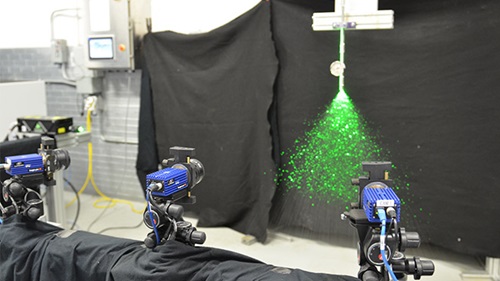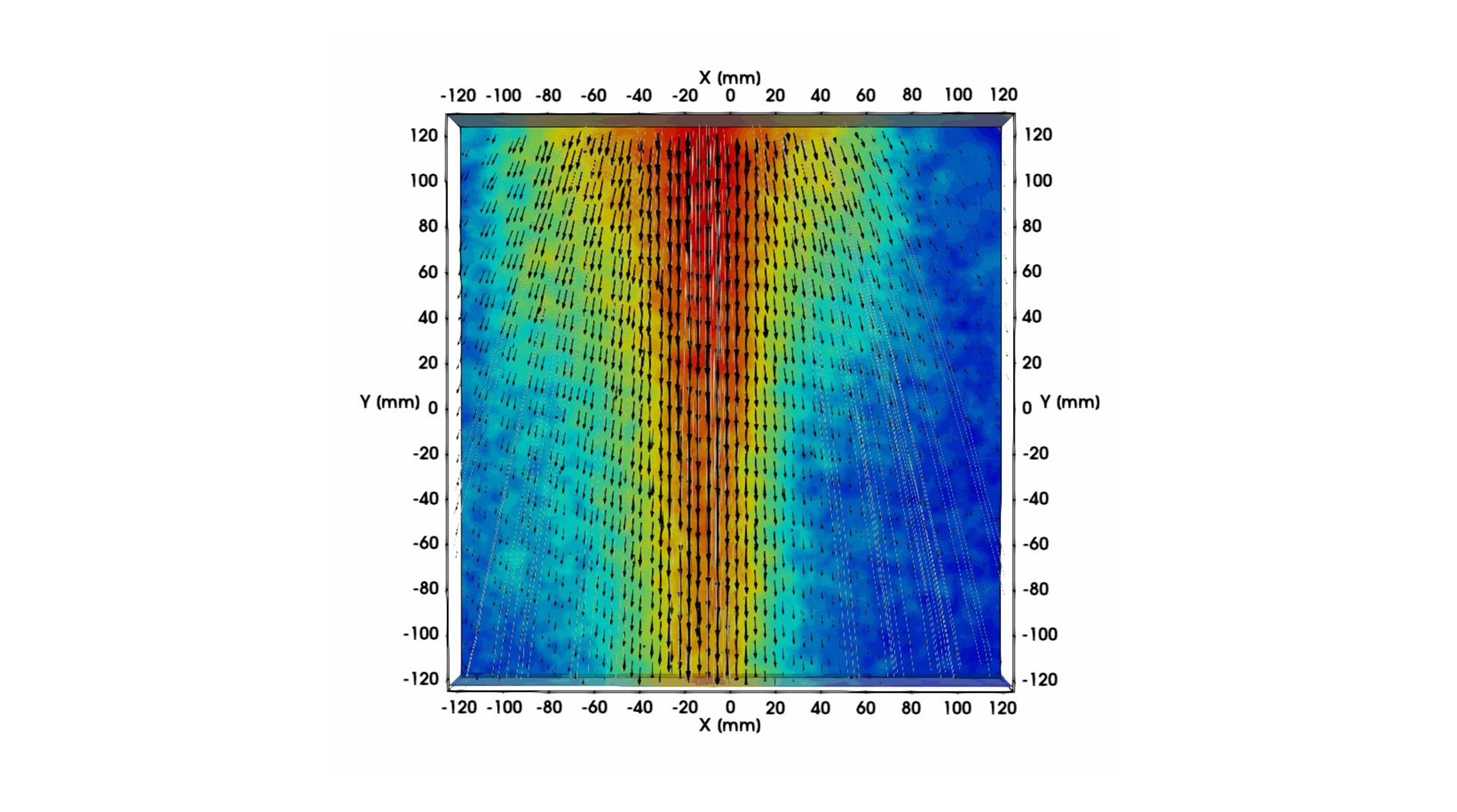Tomographic Particle Image Velocimetry
Tomographic Particle Image Velocimetry (Tomo-PIV) with the LaVision Flow Master system provides volumetric measurements of particle or droplet velocities. A thick laser sheet is used to illuminate the particles within a wedge of the spray. With three cameras capturing the scattered light from multiple viewpoints, the components of speed and direction can be determined in three dimensions.
Tomo-PIV Overview

The thick laser sheet is typically aligned so that the primary velocity component is in-line with the nozzle axis. Typically, many instantaneous velocity fields are determined and used to generate an ensemble average 3D velocity field. The simultaneous capture of 3D velocities across a spray-plane is a unique capability of this non-intrusive measurement method, and can be very useful in applications where the spray interacts with a target or a moving gas stream and for CFD validation purposes.


